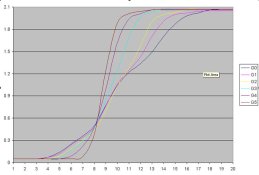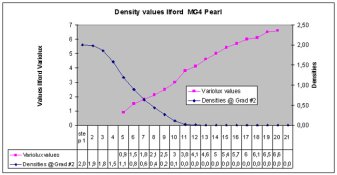hadeer
Member
A week ago I acquired a 21 field projection stepwedge (4.5x6cm) presuming that a handy manual to use it would be in the box. Alas, it wasn't. :rolleyes:
I want to determine the right exposure and paper grade for several kinds of paper. I suppose you will have to make a series of exposures with different times and gradation settings on the enlarger head (variable contrast head). I have a densitometer.
Can someone give me an idea how to proceed?
I want to determine the right exposure and paper grade for several kinds of paper. I suppose you will have to make a series of exposures with different times and gradation settings on the enlarger head (variable contrast head). I have a densitometer.
Can someone give me an idea how to proceed?












